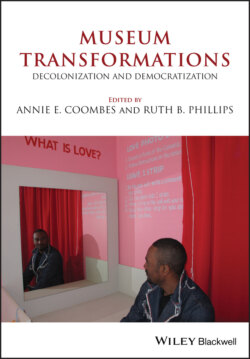Читать книгу Museum Transformations - Группа авторов - Страница 33
The Degussa debate
ОглавлениеThe Degussa debate showed how close history can be and how strongly the past still impinges on present-day German society. This debate erupted during construction work on the memorial. When it became known that the chemical firm Degussa was to participate in providing the antigraffiti coating for the memorial, the board of the foundation called for an abrupt halt to construction work. In the fall of 2003 an intense public debate took place in the media with intellectuals, politicians of all parties, and the general public, during which the past of the firm Degussa and other chemical firms in Europe and their involvement in Nazi crimes were researched and discussed. Degussa’s now defunct affiliate company Degesch had distributed Zyklon B to concentration camps and processed stolen Jewish gold during the Holocaust.
Three weeks later, after it became clear that the current firm Degussa only carried the name of its predecessor, had completely changed its structure, and was not run by the same people any more, the foundation’s board revised its earlier decision and allowed construction work to continue. A decisive reason for this reversal was the fact that there simply was no chemical firm in Germany that had not formerly been involved with either IG Farben or Degesch. They or their predecessors had conformed to the National Socialist racial policy, fired their Jewish managers and officials, and done business with the Nazis (Hayes 2001, 2004). Furthermore, it turned out that other chemicals used in the production of the concrete slabs and their foundation on the memorial site already contained ingredients that had in part been developed by Degussa or by Hoechst, also a successor of IG Farben. The devil was everywhere.
As the foundation’s managing director, I was a close witness of these conflicts and, together with all the people in charge of realizing the memorial project, under enormous pressure. My office did not have the power to decide on the selection of individual firms but, in my view, as a historian and a political administrator, it was not possible to build a memorial like this in Germany, on such historically contaminated ground, without the participation of German firms. It also seemed to me impossible to single out one firm. This was Germany. It was not going to be possible to produce a guilt-free memorial. But I also knew that the name Degussa, as a symbol, would cause pain for survivors. This conflict demonstrated the deep division between the memories of survivors and their descendants on the one hand, and those of the descendants of the perpetrator generations on the other. But of course the reactions were by no means homogeneous on either side. This was visible in the diverse articles and statements in the press, but also among members of the foundation’s advisory board. On the one hand, Alexander Brenner, chair of the Berlin Jewish Community, argued that Degussa should be excluded because the firm’s name was highly symbolic and would hurt survivors. He pointed out that he himself would probably not visit the memorial if Degussa were to participate. On the other hand, a speech by Michael Blumenthal, the American Jewish director of the Jewish Museum in Berlin, most significantly influenced members of the board in the opposite direction. Blumenthal said that he understood Brenner’s feelings, but that his own were different. He told the board that he had also lost relatives in the Holocaust, but that for him this was symbolized not so much by Zyklon B and Degesch as by the Reichsbahn that had deported them. He pointed out that victims associated their own experiences with different symbols, and questioned the assertion that the Zyklon B issue should exclude Degussa from participation in the building of the memorial (Krah 2004). In the end, the memorial was built with the participation of Degussa; and the debate has become part of the complicated history of the memorial. The history of this process is documented in the memorial’s information center. (See also Quack 2007, 49–75.)
